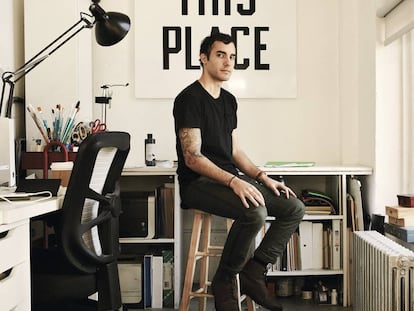Edel Rodriguez, the anti-Trump artist: ‘I never draw anything that isn’t true’
The Cuban-American illustrator’s first exhibition in Spain features the cover art for magazines such as ‘Time’ and ‘Der Spiegel’ that made him an enemy of the former president

Valencia’s Carme Center of Contemporary Culture (CCCC) is currently displaying the work of one of the best-known illustrators of his generation, a status Edel Rodriguez has gained largely through eye-catching magazine covers against former US president Donald Trump, which have been published over the last five years in international media such as Time and Der Spiegel. But the origin of this exhibition is not so much the foreign press, but rather an old Valencian satirical magazine called La Traca, which ceased publication in 1938. During the filming of a documentary called Carceller, el Hombre que Murió Dos Veces (or Carceller, the Man who Died Twice), based on the lives of the former editor of the Republican magazine, Vicent Miquel Carceller, and one of its main contributing artists, Carlos Gómez – both of whom were shot by the Francisco Franco regime in 1940 – the filmmakers sought out Rodriguez for the Cuban-American artist’s views on caricature and the historical role of the authorities in attempting to stifle creative freedom.
Rodriguez has become a reference point in the profession for his political non-conformism and his bold illustrations, such as the one of a melting Donald Trump published in Time in August 2016 or his drawing of the former president holding the decapitated head of the Statue of Liberty in Der Spiegel in February 2017. During the recent US presidential elections, he also produced work for EL PAÍS. He agreed to contribute to the documentary after hearing the story of the weekly La Traca, which had a circulation of almost 500,000 copies and whose editors faced the firing squad for dedicating themselves to “insulting the highest-ranking representatives of Spanish Nationalism, the dignity of the Catholic Church and the founding principles of the Francoist regime in the basest, rudest and most vulgar way possible, using the popularity it had gained over the years for the benefit of Marxist subversion.”
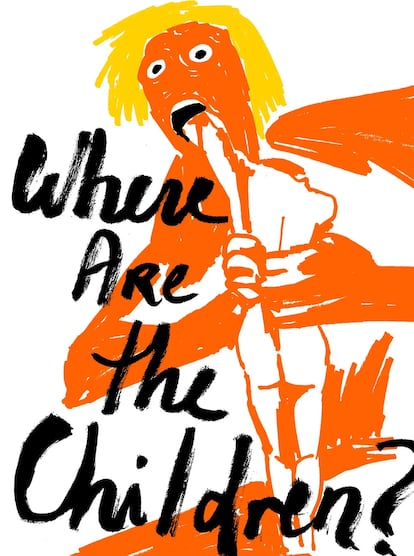
From that collaboration, during the Trump administration’s mandate, a relationship blossomed that resulted in the Valencia exhibition, where 124 of Rodriguez’s works have been reproduced in different forms with a special focus on his illustrations of the former president and his tenure in the Oval Office. The austerity of the Gothic cloister of what was the convent of El Carmen contrasts starkly with the huge black and red images depicting an unhinged Trump. Rodriguez’s work featured on around 20 front pages during Trump’s presidency, generating enormous impact and being reproduced on a large scale worldwide. With that came an increase in threats on social media.
“Well, things have calmed down a bit,” says Rodriguez from his studio near New York during a Zoom interview with EL PAÍS in March. “It was very noticeable what influence a president can have and what he can cause, the mood he can generate among his supporters. I’ve been working since 1994 but it’s only since what happened with Trump that I’ve become well-known. When I started doing those front pages with him, I got calls from television producers and newspapers and although I have US citizenship, I am still an immigrant and it was a risk to take him on, with everything that he was doing.”
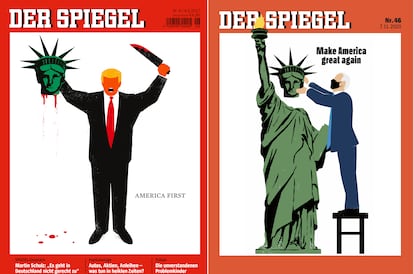
Rodriguez came full circle last November after the presidential elections when he drew the illustrations for another magazine cover, this one featuring President-elect Joe Biden putting the head back on the Statue of Liberty.
“Now we have a normal presidency. We aren’t aware of what the president is doing every hour of every day. With Trump, when you woke up he was already awake and firing off tweets and the press was publishing that instead of covering other things. The media is to blame for giving Trump so much coverage back in 2016. Even in the New York Times, it was all Trump. You put his name in a headline as clickbait and web traffic goes up. The media went a little bit crazy,” he says. “These days it’s all about attention. Magazines and newspapers have to get people’s attention. It’s the only way to make money.” His work, he adds, is focused on getting an idea across to people from all walks of life, “not just a university professor.”
“Drawing is a way to reach people in a simpler way, it allows people to understand things in the moment. I grew up with people who didn’t go to school, people who worked the land, and I want to communicate with these people, with my father,” Rodriguez says.
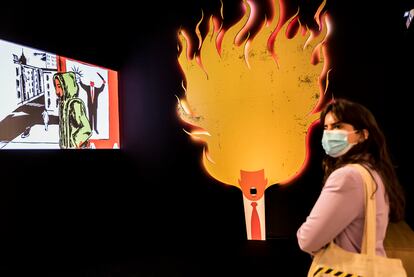
In the exhibition at the CCCC, called Edel Rodriguez. Agent Orange (which runs until September 12), the artist’s inclination toward the use of bold colors and the influence of his origins can be appreciated. “Cuban art, the poster, comes from the roots of the country,” explains Rodriguez. “Every house is painted in four or five colors, the cars… there is no black or white. These are things that you absorb through your eyes when you are there. When I came to New York, the teachers couldn’t understand why we used stronger colors like red. I couldn’t bring myself to use white, and yellow is yellow. I think in a way it’s just how Cuban people think.” Rodriguez’s exhibition, his first in Spain, was commissioned by Nacho Navarro, who is also an executive producer on the Carceller documentary. The documentary is about to start on a cycle of film festivals and Rodriguez’s show is also working in collaboration with a local festival, Docs de Valencia.
“I’m a peaceful man but if you hit me, I have to defend myself. And the way I have to defend myself against a fascist is through the strength of my work,” says Rodriguez, who also rejects “the two populisms of left and right, both of Fidel Castro and of Donald Trump.”
“I never draw anything that isn’t true; I comment on what is happening, what I think. Propaganda comes when someone decides to lie or when the state tells someone what to draw or what to write.”
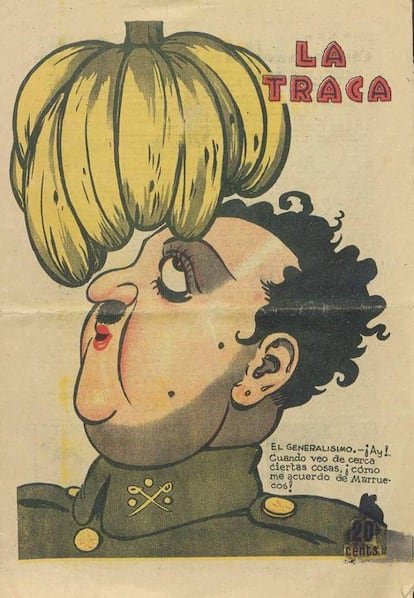
An admirer of painters such as Pablo Picasso, Henri Matisse, Paul Klee, the political art of Francisco Goya and Marcel Duchamp’s way of thinking, Rodriguez is currently working on a graphic novel based on his life: his traumatic departure from Cuba in 1980, his spell in a camp for exiles, his life in the US and how his teachers were able to nurture his talent.
The possibilities the genre is opening up excites Rodriguez. “It connects with many age groups. Companies are aware there is a lot of interest, everybody wants to attract young people and it’s a very direct way of communicating,” he explains. “The visual form is special, unique; text won’t reach people who have no interest in reading a book or a newspaper article, but they see something and understand immediately. Visual art and imagery invade people’s inner space, it connects immediately with people in a way that writing can’t. You may have no interest in writing but a drawing can grab your attention in half a second. Even if you don’t like what I want to say, you’ve seen it, and it’s already in your head.”
English version by Rob Train.
Tu suscripción se está usando en otro dispositivo
¿Quieres añadir otro usuario a tu suscripción?
Si continúas leyendo en este dispositivo, no se podrá leer en el otro.
FlechaTu suscripción se está usando en otro dispositivo y solo puedes acceder a EL PAÍS desde un dispositivo a la vez.
Si quieres compartir tu cuenta, cambia tu suscripción a la modalidad Premium, así podrás añadir otro usuario. Cada uno accederá con su propia cuenta de email, lo que os permitirá personalizar vuestra experiencia en EL PAÍS.
¿Tienes una suscripción de empresa? Accede aquí para contratar más cuentas.
En el caso de no saber quién está usando tu cuenta, te recomendamos cambiar tu contraseña aquí.
Si decides continuar compartiendo tu cuenta, este mensaje se mostrará en tu dispositivo y en el de la otra persona que está usando tu cuenta de forma indefinida, afectando a tu experiencia de lectura. Puedes consultar aquí los términos y condiciones de la suscripción digital.
More information
Archived In
Últimas noticias
Most viewed
- Reinhard Genzel, Nobel laureate in physics: ‘One-minute videos will never give you the truth’
- Oona Chaplin: ‘I told James Cameron that I was living in a treehouse and starting a permaculture project with a friend’
- Pablo Escobar’s hippos: A serious environmental problem, 40 years on
- Why we lost the habit of sleeping in two segments and how that changed our sense of time
- The fall of a prolific science journal exposes the billion-dollar profits of scientific publishing

